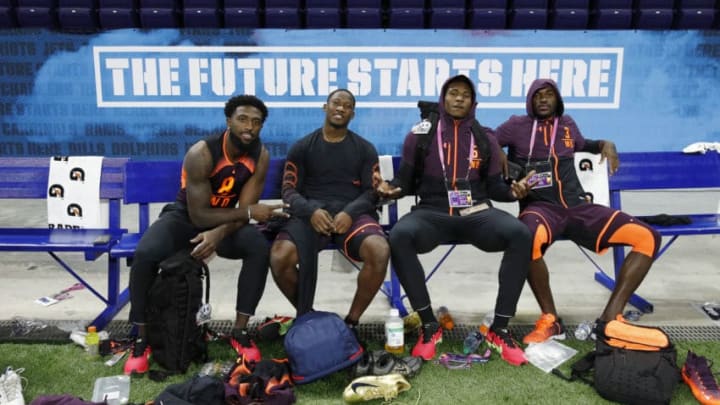
The Detroit Lions case for D.K. Metcalf
D.K. Metcalf, WR, Ole Miss, 6-3, 228, 4.33
Upon basic inspection of his size and speed, it’s easy to see why Metcalf sticks out as an athlete. For a man of his size, running a 4.33-second forty-yard dash qualifies him as something of a freak. Once you put in that he has a vertical jump of 40.5 inches, a broad jump of eleven feet-two inches, and can bench press 225 pounds 27 times, you have to consider his talent inside of the top ten picks.
Let me play devil’s advocate for a minute and say what some are saying about Metcalf’s combine numbers, “It’s all without pads; what about his agility and what about his on-field production?” Nothing with the draft exists in a vacuum; all information is relevant and should be considered when you rank a prospect.
It’s true that straight-line speed is not everything and that receivers need to be able to be flexible in the hips to make crisp cuts which create separation. Metcalf’s short shuttle and three-cone drill were not nearly as impressive as his straight-line speed and vertical jump. We also haven’t discussed his production yet, either, so there are some issues to deal with.
Let’s get into those issues. Part of the lack of production was due to his own neck injury at the beginning of the 2018 season. His neck injury this past season was a freak play that caused him to sit out the rest of his redshirt sophomore year, per 247 Sports.
If you look at the team around him, Ole Miss was pretty deep at wide receiver. His career stat line reads like what you’d expect in one year for a man who is that physically gifted. Metcalf has 1,228 yards, fourteen touchdowns, on 67 receptions, with 2017 being his best year (646 yds., 7 TD’s, 39 rec.), per Sports-Reference.com.
For all of his ability, Metcalf has been third in receiving both of the last two years and regardless of which quarterback was taking snaps. Often criticism of spread offenses has been that they don’t force wide receivers to run many routes on a typical pro route tree, which adds time to prospects learning pro offenses. Former teammate and 2019 draft prospect, A.J. Brown, has been the focus of the Ole Miss offense and has put up better numbers as the leading receiver for both of the last two years.
For comparison, former Detroit Lions wide receiver Calvin Johnson, one of the best prospects ever at wide receiver, was 6-5, 239 pounds, ran a 4.35 forty-yard dash, had a vertical jump of 42.5 inches, and a broad jump of eleven-seven. Johnson was the second pick in the NFL Draft. Metcalf has very close measurable talent in many ways, even with the lesser production he looks similarly imposing in pads.
